Water is all around us. Approximately 71% of the earth’s surface is covered in water. Water is in the air, the ground, and a substantial portion of our bodies. But that doesn’t mean all animals like it! While most species have a positive relationship with water as a drinking source or bathing option, some creatures just plain avoid it. Here are seven animals that hate water, and why they dislike it so very much.
1. Cats
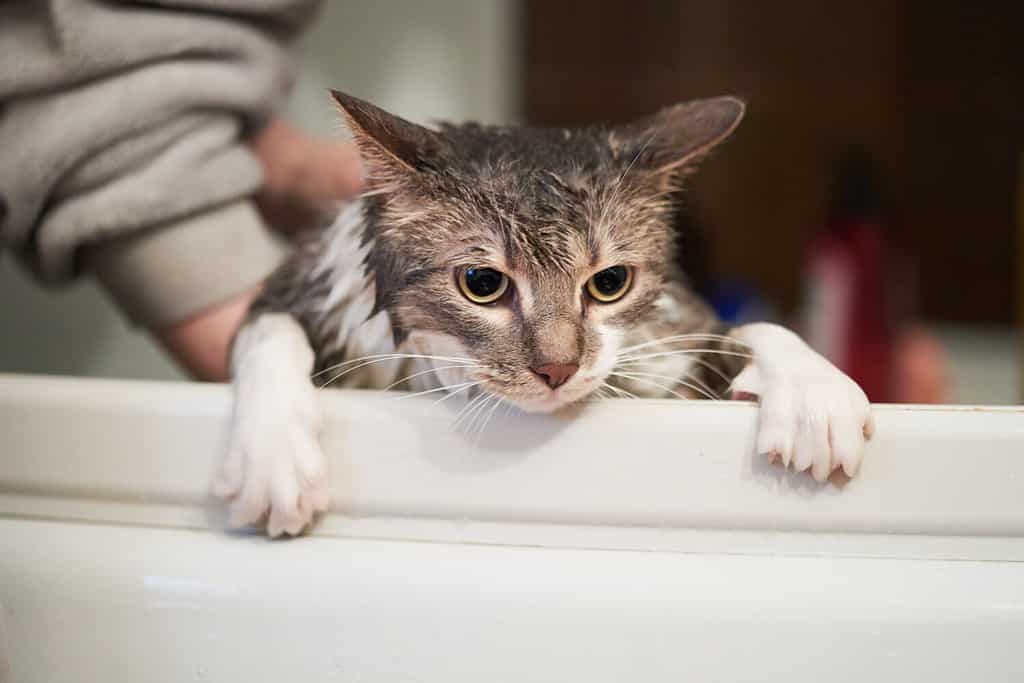
Wet fur makes a cat feel heavy and uncomfortable.
©JSep/Shutterstock.com
Cats are notoriously clean creatures, but that cleanliness doesn’t come from regular soaks in the tub. Well-known for their aversion to water, domestic cats put up a big fight to avoid getting wet. Some big cat species such as tigers or jaguars don’t mind water but try telling that to your pet kitty! Cats will avoid getting wet if at all possible.
One reason cats don’t like water may go back thousands of years. While the domestic cat’s exact origin is unknown, most cats are believed to be descendants of the wildcat Felis silvestris. Through genetic testing and archaeological and anthropological records, researchers have found that cats were most likely domesticated in the Near East in the Fertile Crescent. Because these wildcats lived in the desert, they did not often come in contact with bodies of water. Instead of getting wet, the cats regulated their body temperatures and groomed themselves by licking or sunbathing.
This lack of water also means that the domestic cat’s predecessors were not comfortable with water. Since things they aren’t familiar with could pose a threat, most cats are wary of water. Additionally, cats have a very good sense of smell and use scent to communicate with other cats and mark their territories. Being bathed in water changes their natural odor, which makes them uncomfortable.
2. Mice
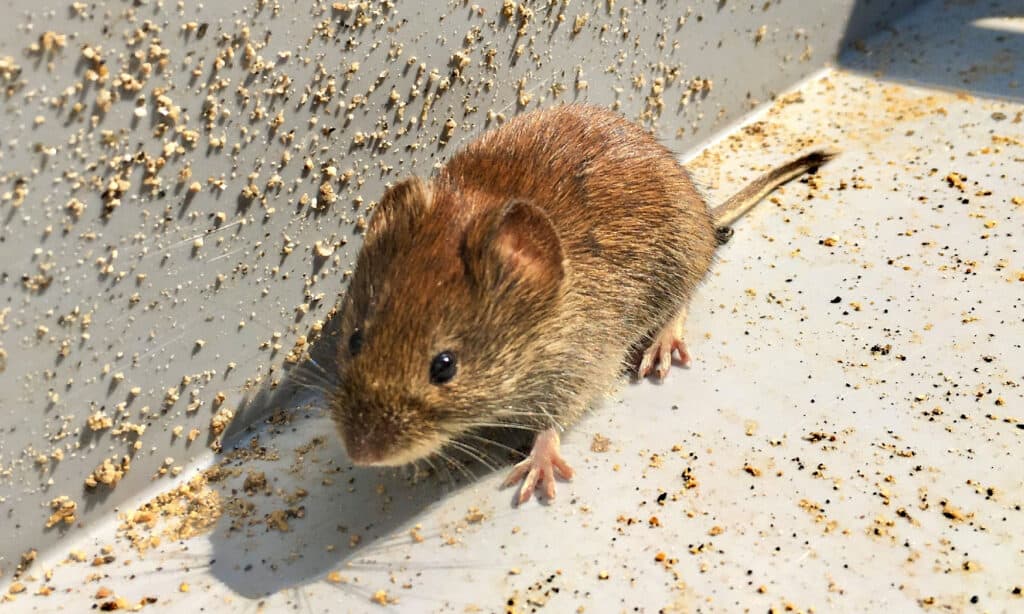
Mice are good swimmers and are capable of swimming up to half a mile.
©iStock.com/Bruno_il_segretario
Most animals are drawn to homes with convenient water sources, but what about the mice living in your attic? Mice get most of their fluid intake from the food they eat, rather than drinking water. While mice can swim well (they can tread water for hours or even days and hold their breath underwater for up to three minutes), they prefer to avoid it if at all possible. This is because it can be very dangerous for them.
Since mice typically weigh just 0.4-0.9 ounces, they are unable to fight against currents in running water. Additionally, their tiny bodies can’t regulate cold temperatures very well, and getting their dense coats wet puts them at risk of hypothermia. Many mice run into trouble if they fall into pools, bird baths, or buckets with water in them. Once they fall in, they are often able to get out. Eventually, the mouse’s energy depletes, and they drown.
Luckily for mice, they are able to recognize water depth. If they determine that the water is too deep, they will avoid it. One study found that while mice would enter a container with 8 mm of water but were hesitant to enter 20 mm of water. This proved that they could tell how deep the water was, and when they would (literally) be out of their depth.
3. Chinchillas

The chinchilla has a longer lifespan than most rodents and can live up to 20 years.
©Creatopic/Shutterstock.com
Chinchillas are often considered the softest animals in the world. This is due to their extremely dense, thick coats. A chinchilla has around 50-60 hairs per hair follicle and over 20,000 hairs in each square inch of its body. However, while these soft, dense coats make chinchillas popular with people, they also make getting wet a very bad idea.
In addition to being dense, chinchilla fur doesn’t have waterproofing like some other mammals. As a result, their fur will saturate completely when they get wet. The dense fur then traps in the moisture, compacting the fur and turning it into a large, matted mass. Because of the fur’s density, it does not dry well. Moisture trapped near the skin can cause fungal infections such as ringworm or even mold growth.
To avoid these complications, chinchillas do not bathe in water. Instead, they take dust baths. Native to the arid Andes Mountains in South America, chinchillas are used to dry climates. On this dry ground, they will roll around in it and cover their coat in dust. The dust absorbs and eliminates moisture and oils that accumulate on their coats. Dust baths also clear away debris and dirt, making water baths completely unnecessary.
4. Gorillas
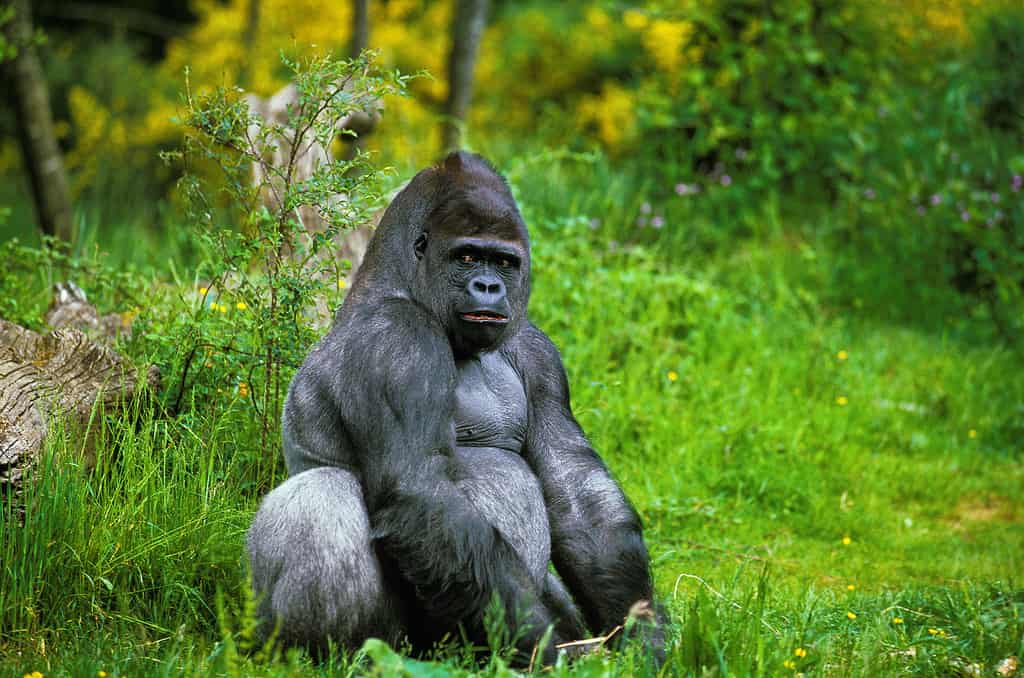
When it rains, gorillas sit quietly in one spot and wait for it to pass.
©slowmotiongli/Shutterstock.com
Gorillas are good at many things and can problem solve, use tools, build shelters, and even cheat at games. One thing they can’t do, however, is swim. A gorilla’s strong, muscular body has a very low body fat percentage, which prevents them from being buoyant. While they will wade through water on two legs in search of food (or play with water in a zoo), they naturally avoid large bodies of water that might be too deep.
Before they enter the water, gorillas will use their problem-solving and tool skills. The apes have been observed using branches as measuring sticks to gauge water depth. They will also use these branches as walking sticks if they have to forge across swamps or small bodies of water.
5. Horses

Horses can swim for about half a mile (or 30 minutes) before they need to rest.
©OlesyaNickolaeva/Shutterstock.com
Although horses have confidently been used in competition and wars throughout the ages, they aren’t always as brave when it comes to water. While horses can swim with their heads above the surface, they are often hesitant to enter bodies of water. Even puddles can be intimidating to horses. But why are these big animals so nervous around water?
It all comes back to being unsure about the unknown. If a horse can’t see the bottom of a puddle, they can’t determine how deep it is. The same goes for entering rivers or ponds; horses are naturally nervous if they can’t see where they are putting their hooves. Horses are meticulous about their footing, because they have very delicate legs, and a misstep could result in an injury. In the wild, a limb injury would make them vulnerable to predators. Even in captivity, an injured leg can lead to death, if the horse becomes permanently lame.
6. Kangaroo rats
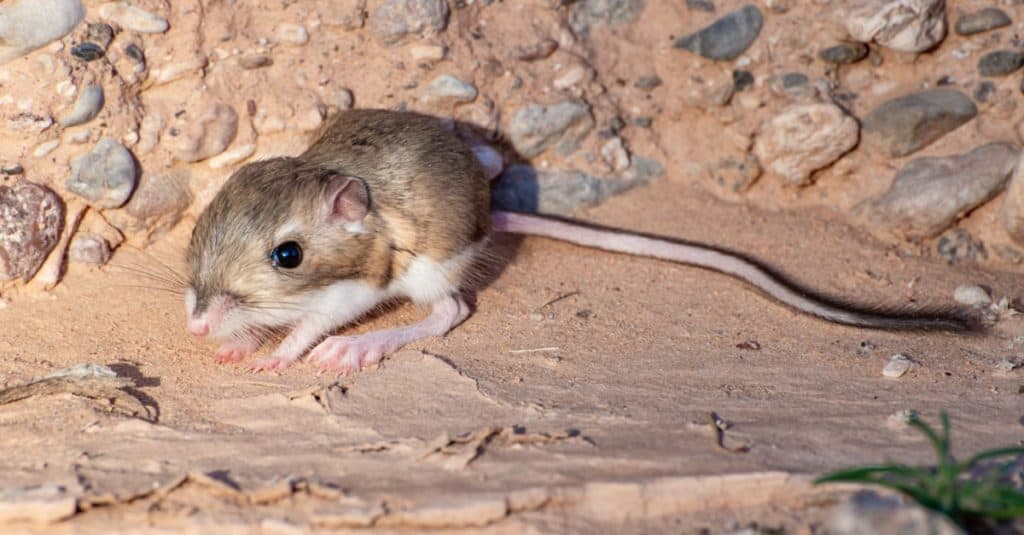
Kangaroo
rats got their name from their long kangaroo-like back feet.
©Dominic Gentilcore PhD/Shutterstock.com
In the deserts of western North America, the kangaroo rat has little need for water. While these members of the genus Dipodomys don’t necessarily have feelings about water way one or the other, they give it very little thought. In fact, they don’t rely on it to survive at all: Kangaroo rats rarely drink water and get most of their fluid intake from their food.
Primarily seed eaters, the kangaroo rat has a high water-retention ability. Through the digestive process, their bodies transform fat from their food into water. To retain as much fluid as possible, a kangaroo rat’s kidneys produce concentrated. They also have fewer sweat glands than many other mammals to prevent excess water loss. These adaptations mean that kangaroo rats do not need to seek out water in their desert habitats.
7. Animals with Rabies
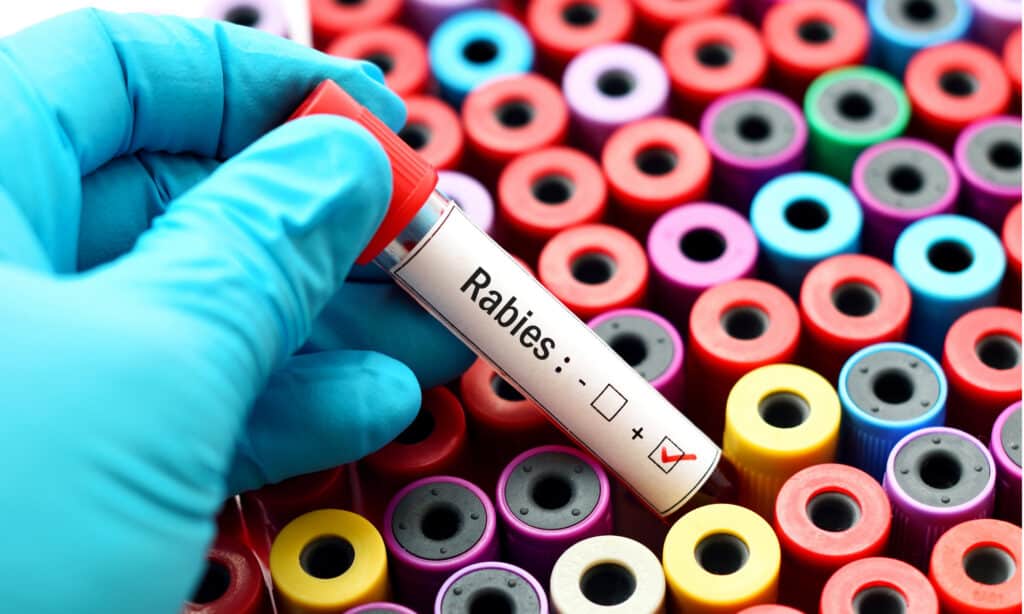
Rabies symptoms include hydrophobia, mental disorientation, headache, fever, and muscle spasms.
©iStock.com/arun011
Perhaps the animal with the biggest aversion to water isn’t one species, but many with a devastating affliction. The rabies virus can affect all mammals, though some (like Virginia opossums) are at lower risk due to low body temperatures. When an animal is infected, the rabies virus travels up the spinal cord from a bite and multiplies in the brain, where it triggers inflammation. This swelling causes neurological symptoms, including hydrophobia or fear of water.
When an animal contracts rabies, the virus triggers painful spasms in the pharynx (throat). These spasms can make swallowing difficult or even impossible. As a result, the animal is terrified to swallow anything, including water. Even the sight of water can induce the spasms and associated fear. Hydrophobia is just one symptom of rabies, but it can be one of the main contributors, as many rabies patients die of dehydration.
Summary of Animals That Hate Water
| Animal | Reason |
|---|---|
| 1. Domestic Cat | Natural distrust of water dates back to wild ancestors. Water also affects scent. |
| 2. Mice | While good swimmers, they run the risk of drowning in water they can not get out of. |
| 3. Chinchillas | Getting their thick fur wet can cause fungal infections. |
| 4. Gorillas | Gorillas cannot swim and are wary of water as a result. |
| 5. Horses | Nervous about potentially losing their footing due to not being able to see where they are setting their hooves. |
| 6. Kangaroo rats | Don’t hate water, but just don’t need it! They get almost all of their fluids from food. |
| 7. Animals with rabies | The rabies virus causes severe hydrophobia. |
The photo featured at the top of this post is © BBbirdZ/Shutterstock.com
Thank you for reading! Have some feedback for us? Contact the AZ Animals editorial team.







